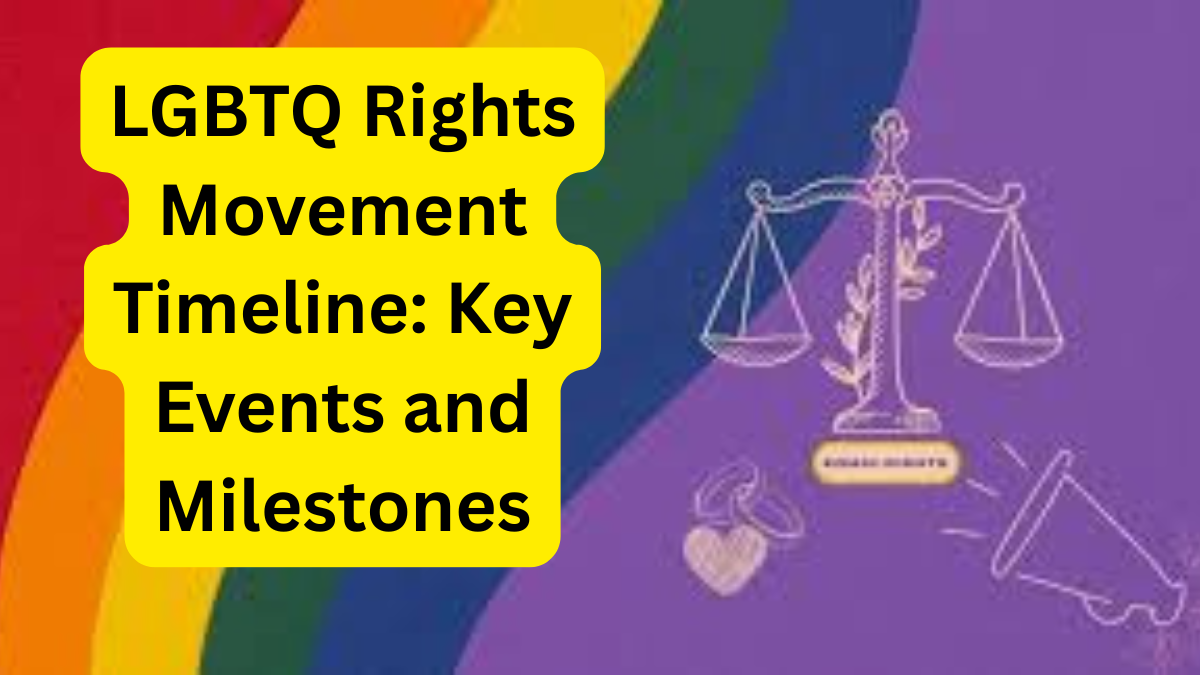The LGBTQ rights movement timeline spans over a century of activism, legal battles, and social transformation. This comprehensive guide traces the most significant events from early organizing efforts to contemporary achievements, providing a clear historical framework for understanding the evolution of LGBTQ rights worldwide. The movement’s timeline reveals both remarkable progress and ongoing challenges in the fight for equality.
Early Foundations (1924-1968)
The movement’s origins predate the famous Stonewall uprising, with courageous early activists laying crucial groundwork for future progress.
Pioneering Organizations and Events
- 1924: Society for Human Rights founded in Chicago – first recognized gay rights organization in the U.S.
- 1950: The Mattachine Society established, becoming one of the earliest sustained gay rights groups
- 1955: Daughters of Bilitis formed as the first lesbian civil and political rights organization
- 1966: Compton’s Cafeteria riot in San Francisco – first known LGBTQ uprising in U.S. history
Initial Legal Challenges
- 1958: One Inc. v. Olesen Supreme Court case first ruled in favor of gay rights
- 1961: Illinois becomes first state to decriminalize homosexuality
- 1960s: Various challenges to sodomy laws and employment discrimination begin emerging
Modern Movement Emergence (1969-1989)
This period witnessed the movement’s transformation from small organizing efforts to a broad-based civil rights struggle.
Stonewall and Its Aftermath
- June 28, 1969: Stonewall Inn riots spark modern LGBTQ rights movement
- 1970: First Pride marches held in New York, Los Angeles, and Chicago
- 1973: American Psychiatric Association removes homosexuality from DSM
Political Organizing and Setbacks
- 1978: Harvey Milk becomes first openly gay elected official in California
- 1982: Wisconsin becomes first state to ban discrimination based on sexual orientation
- 1986: Bowers v. Hardwick Supreme Court decision upholds sodomy laws
Major Advances and Challenges (1990-2009)
This era saw both significant progress and devastating setbacks, particularly during the AIDS crisis.
Legislative and Legal Milestones
- 1993: “Don’t Ask, Don’t Tell” policy implemented for military service
- 1996: Romer v. Evans establishes basic legal protections
- 2003: Lawrence v. Texas decriminalizes same-sex relations nationwide
- 2004: Massachusetts becomes first state to legalize same-sex marriage
Cultural and Political Shifts
- 1997: Ellen DeGeneres comes out on national television
- 2000: Vermont establishes first civil unions
- 2009: Matthew Shepard Act expands hate crime protections
Contemporary Achievements (2010-Present)
Recent years have brought landmark victories while new challenges have emerged.
Marriage Equality and Beyond
- 2011: “Don’t Ask, Don’t Tell” repealed
- 2015: Obergefell v. Hodges legalizes same-sex marriage nationwide
- 2020: Bostock v. Clayton County protects LGBTQ employment rights
Current Frontiers and Backlash
- 2016-present: Wave of anti-transgender legislation introduced nationwide
- 2020-present: Increased visibility and protections for non-binary and transgender people
- 2023: Expansion of state-level protections and continued federal advocacy
Decade-by-Decade Major Milestones
| Decade | Legal Milestones | Social Milestones | Political Milestones |
|---|---|---|---|
| 1960s | Illinois decriminalization | Compton’s/Stonewall riots | Early organizing |
| 1970s | First anti-discrimination laws | APA declassification | Harvey Milk election |
| 1980s | Bowers v. Hardwick setback | AIDS crisis activism | First state protections |
| 1990s | “Don’t Ask, Don’t Tell” | Increased media visibility | Defense of Marriage Act |
| 2000s | Lawrence v. Texas | Marriage equality begins | Hate crimes protection |
| 2010s | Nationwide marriage | Trans visibility increases | Employment protection |
| 2020s | Anti-trans legislation | Non-binary recognition | State-level battles |
How to Research Movement History
Step 1: Consult Primary Archives
- Visit digital collections from LGBTQ historical societies
- Access university special collections on movement history
- Review historical newspapers and periodicals
Step 2: Verify Dates and Events
- Cross-reference multiple historical sources
- Consult academic historical works
- Check dates with reputable movement organizations
Step 3: Understand Context
- Read firsthand accounts from participants
- Consider historical context for each period
- Recognize regional variations in movement history
Frequently Asked Questions
Q1: What was the first country to legalize same-sex marriage?
A: The Netherlands became the first country to legalize same-sex marriage in 2001.
Q2: How did the AIDS crisis affect the movement?
A: The crisis devastated the community but also galvanized unprecedented activism and visibility through organizations like ACT UP.
Q3: What are some current priority issues for the movement?
A: Current priorities include transgender rights, non-discrimination protections, youth safety, and global decriminalization.
Q4: How can I learn more about local LGBTQ history?
A: Contact local LGBTQ community centers, historical societies, and university archives for region-specific historical resources.
Q5: What was the significance of the Stonewall riots?
A: Stonewall marked a turning point from accommodation to resistance and sparked the modern LGBTQ rights movement.
Continue Your Historical Education
Further Learning Resources:
- GLBT Historical Society: https://www.glbthistory.org/
- Making Gay History Podcast: Firsthand accounts from movement participants
- Library of Congress LGBTQ+ Studies: Research guides and collections
Preservation Efforts:
- Support local LGBTQ historical archives
- Record oral histories from community elders
- Donate to historical preservation organizations
Contact Information:
- GLBT Historical Society: info@glbthistory.org
- Lambda Legal: https://www.lambdalegal.org/
- Human Rights Campaign: https://www.hrc.org/
